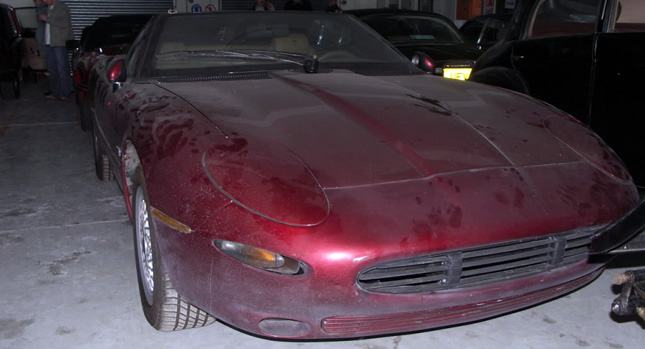Long before the current F-Type, Jaguar was very close to launching a similar car that would have been the first true successor to the iconic E-Type. As the XJ-S failed to emulate the E-Type’s success, in 1980 Jaguar started developing the F-Type, codenamed XJ41 (coupe) and XJ42 (roadster).
The F-Type was supposed to use the underpinnings of the XJ40 sedan and to look like a modern reinterpretation of the E-Type. Signed off for production in July 1982 by Jaguar’s then owner British Leyland, the F-Type started taking shape, with a launch date set for March 1986.
The F-Type coupe and convertible were envisioned as much sportier models than the XJS, with Jaguar focusing on handling and maneuverability. Development tests revealed that the car was able to reach a top speed of 159 mph (256 km/h) and sprint from 0 to 60 mph (96 km/h) in 6.6 seconds.
However, problems started to appear. As the XJ40 was delayed, the XJ41/42 was also postponed, with the 1986 launch date being moved back to late 1988. The delay meant the car also needed better performance, since rivals were making increasingly powerful cars.
Jaguar installed a 4.0-liter version of its AJ6 straight-six engine and started developing a 330bhp twin-turbo version. The car also gained more weight, becoming even wider than the XJS.
In 1987, the XJ40-sourced suspension was questioned and the interior was changed obtaining more bespoke design. However, in 1988, the F-Type gained four-wheel drive for the turbocharged version, adding further weight and complication. The project had already looked like it had lost connection with the original XJ41/42 of 1980-1982.
Nevertheless, Jaguar commissioned three fully finished prototypes to Karmann, which were subsequently tested. The twin-turbo targa version reportedly exceeded 170 mph (274 km/h) in tests at Nardo in Southern Italy, despite being overweight. By now, the launch date was pushed back to 1994.
In 1989 though, Jaguar was bought by Ford, which ordered a full review of the company. The F-Type was deemed to be out of focus and overweight and was axed in March 1990. Ford had a point as the original XJ41 production target of 1,500 kg (3,307 lbs) set in May 1986 had grown to 1,807 kg (3,984 lbs) by March 1990.
Another downside of the project was that in 1987, the coupe version’s boot was replaced by a rear hatch, which meant more production costs, as the bodies of the coupe and convertible were different from the B-pillar onwards.
Nevertheless, the XJ41/42 didn’t die in vain. At the request of Tom Walkinshaw of TWR fame, a young designer by the name of Ian Callum had the car sit on an XJS platform. Since Jaguar refused to make it, the design was modified and proposed to Ford-owned Aston Martin. That’s how the DB7 was born.
By Dan Mihalascu
Story References: Aronline , Autocar
Photo Credits: XJ40 Forum
PHOTO GALLERY











